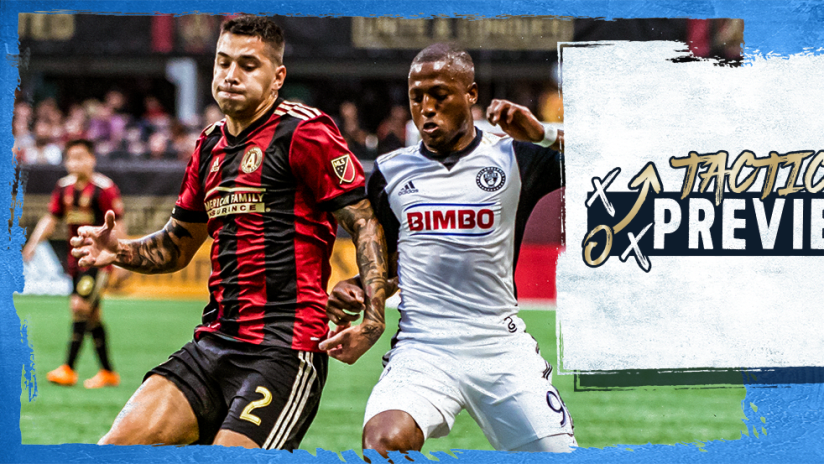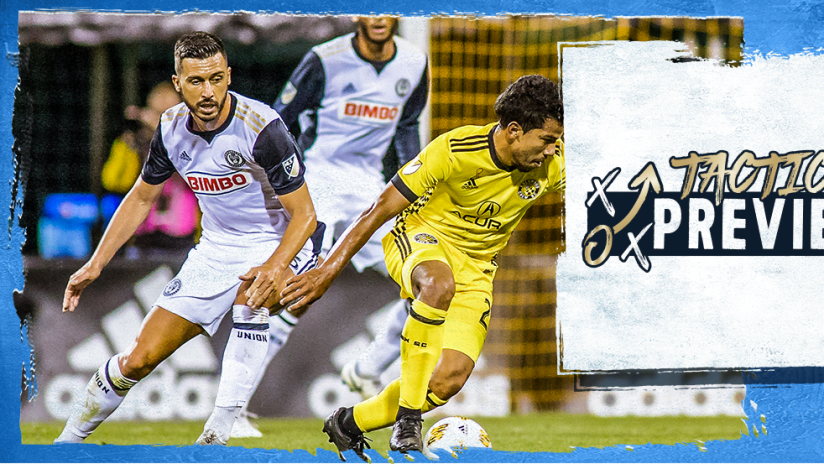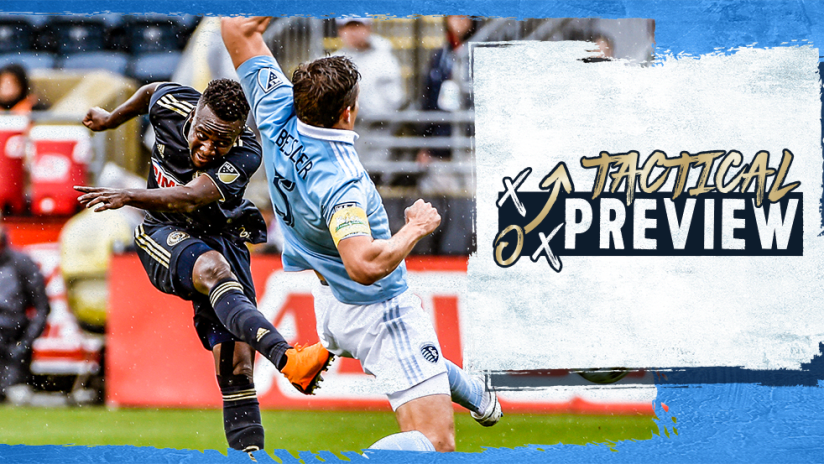If you wanted to see fun soccer in 2018, you could do worse than a Union match or an Atlanta United game. Both sides moved the ball fast and looked to spread pitch out to create space for their playmakers. Atlanta, of course, did it with the unfathomable combo of Miguel Almiron and Josef Martinez leading the line, while Philly relied on a gritty determination and underrated midfield on their drive to the postseason.
Both teams went through tactical revamps in the offseason, and Atlanta introduced the club's second-ever head coach, Frank de Boer. With Almiron jetting for Newcastle and South American Player of the Year Pity Martinez replacing him, De Boer had some leeway to change the team's on-field approach. Thus far, returns have been less than desirable.
Same shape, new approach
In Atlanta's last match against Monterrey in Concacaf Champions League, they played the 3-4-3 shape de Boer has favored since arriving. This is not, however, a 3-4-3 like the one Tata Martino used at times last season. Martino's Atlanta sides relentlessly built from deep for most of the year, drawing defenses high and opening a band of space in midfield for superstar Almiron to exploit. Almiron with the ball, facing forward, moving full speed -- that's a nightmare. Josef Martinez in front of him? Fearsome.
Almiron's replacement, Pity Martinez, is a black belt ninja-wizard with the ball at his feet, but he does not have that down-your-throat athleticism around which Martino could build his team. de Boer's solution has been to tuck Pity and Ezequiel Barco in as narrow supporting strikers/attacking midfielders behind Josef Martinez. In theory, this opens the wide areas for the wingbacks and provides bodies in the center to bog up counterattacks.
In practice? Well, United fans will hope what they have seen is part of a learning curve. Certainly, when Pity or Barco are isolated in space with the ball they might as well have the One Ring. But too often they are receiving with their back to goal and without space to pick their heads up; they are forced to do heavy amounts of work just to get into a dangerous position, and then look up to find only Josef, bracketed by center backs, ahead of them.
How to attack space in the back line
de Boer's structure doesn't yet involve pushing one of his deeper-lying attackers into the front line to prod at the spaces left when two central defenders hew closely to Josef, and as a result Atlanta is creating plenty of good spaces in their attacking half but do not have players in good positions to exploit them.
Progress through midfield
A second issue is ball progression through midfield. Currently, the Five Stripes are forced to rely on their outside center backs -- often Michael Parkhurst and Leandro Gonzalez Pirez -- along with Darlington Nagbe to move the ball from back to front. Julian Gressel on the right wing can do it, but he's far more effective when receiving the ball near the final third. Brek Shea and Mikey Ambrose on the left? So far they mostly look like candidates for Kai Wagner's Summer Camp.
Using Parkhurst and Gonzalez Pirez is fine -- as long as you can effectively account for the space they leave behind. Too often these advancing center backs are not covered well, and the opposition can simply slide a body out wide and break the other way after a turnover. This wouldn't be such an issue, of course, if Atlanta's counterpress was up to 2018 levels. Counterpressing is as much about forcing the first pass after a turnover backwards or forcing an aimless punt as it is winning the ball back in a tackle, but that's all academic if your front three don't do it effectively. For all their talent on the ball, Barco and Pity have not shown great -- or coordinated -- instincts for counterpressing, and this means it's fairly easy to pick out a runner into space behind the wide center backs.
Defending wide areas
Defensively, Atlanta has shown another fairly reliable flaw. When you attack space behind a wingback, the wide center back will follow, but Miles Robinson can be very picky about when he leaves the central channel of the pitch. This means a central midfielder or a wingback must track runs into the half-space between the wing and the center. It's doable, but it's inefficient and breaks down easily. Monterrey, for instance, was often able to penetrate the back line this way and force Atlanta into deep recovery runs that took the sting out of their attacks.
Central numbers
Finally, the Five Stripes' setup leaves an incredibly odd problem for a high-flying modern team: A lack of numbers in the center of midfield. When Pity and Barco push the ball forward with Josef Martinez, they tend to drift a bit wide to find more space. This means the opposition can counter through the middle until they meet resistance from Eric Remedi and Nagbe. Remedi is a fine holding player, but when asked to cover extra space vertically, he leaves an unprotected back three without wingbacks tucked deep enough to protect the flanks. This means the midfield is low on numbers and the defensive line behind it is stretched thin. Not an ideal defensive situation by any means!
But for as much as Atlanta United look like a work in progress, it's worth remembering that Josef Martinez, all-time single season goals scored record holder, is the cheapest player in the team's attack. The Five Stripes have quality, they just haven't figured out how to use it quite yet.
The Union and Atlanta United face off in Atlanta at 7 p.m. ET on Sunday, March 17. Catch it live on PHL17.













